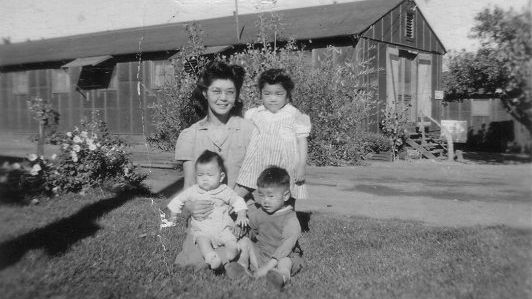This year’s National Day of Remembrance marks 80 years since the day President Franklin D. Roosevelt signed Executive Order 9066 on Feb. 19, 1942, which led to the incarceration of 120,000 Japanese Americans during World War II.
In commemoration, the National Park Service, Smithsonian’s National Museum of American History and the Heart Mountain Wyoming Foundation will co-host a weekend series of live virtual events, Feb. 18-20. This year’s theme, “80 Years of Reckoning,” reflects the importance of national dialogue and the role museums and historic sites play in the dialogue about race in America, according to a release.
Executive Order 9066 also affected Italian and German Americans, but the vast majority of those incarcerated were Japanese Americans. They and their families, regardless of citizenship, were rounded up, taking only what they could carry, and sent to prison camps. Many lost their loved ones and their livelihoods.
“This story of displacement and mistreatment parallels that of other communities in the United States,” said Chuck Sams, National Park Service director. “The National Park Service is committed to telling these difficult histories with accuracy and authenticity, so that we may heal as a nation. Through the work of our parks, partnerships and programs like this, we will continue to address the civil liberties and civil rights violations of the past, so we can ensure this never happens again.”
Hanako Wakatsuki, superintendent of the Honouliuli National Historic Site, explained there were more than 50 sites across the United States associated with incarceration camps. In Hawaii, there were 17 sites that held incarcerated Japanese Americans.
Wakatsuki has a personal connection to this time in history — four generations of her family were incarcerated at Manzanar during WWII.
She said, “My great-great grandmother, my great grandparents, my grandparents and my aunts and uncles” were incarcerated. “My dad was the first child born after the war. His older sister, my Aunt Joannie, was the last child in our family to be born in the camp. That was 1945.”
About this year’s events, Wakatsuki explained, “We’re going to talk a little about the Japanese American incarceration, but we’re also going to be talking about how our communities are moving forward. Other conversations we’re having are focused on how his has impacted the arts, dealing with community involvement and how we are empowering the community.
“We want to show the community and show America, and say, yes, this is part of our collective history; we need to learn from it. But how are we going to talk about these things? How can we elevate these stories, because they’re obviously relevant today. My personal hope is that if this is successful, this could be a model for other communities to also have these discussions. We just need to find new mechanisms to engage people. Honestly, we need to have these discussions if we want to move forward and create a better future for ourselves, because if we don’t know our past, how can we plan our future?”
This year’s events will be livestreamed on the National Park Service YouTube channel. The full schedule of events and speakers can be found on the National Museum of American History’s website. The Opening Ceremony took place Feb. 18, but there are panel discussions scheduled for Feb. 19 and 20 starting from 8 a.m. Hawaii Standard Time. All will be available to view even after the initial showing.
The National Park Service oversees six parks across the country honoring those who were incarcerated and telling the full stories of their experiences — Manzanar National Historic Site, Minidoka National Historic Site, Tule Lake National Monument, Bainbridge Island Japanese American Exclusion Memorial, Honouliuli National Historic Site, and the National Memorial to Patriotism During WWII.




